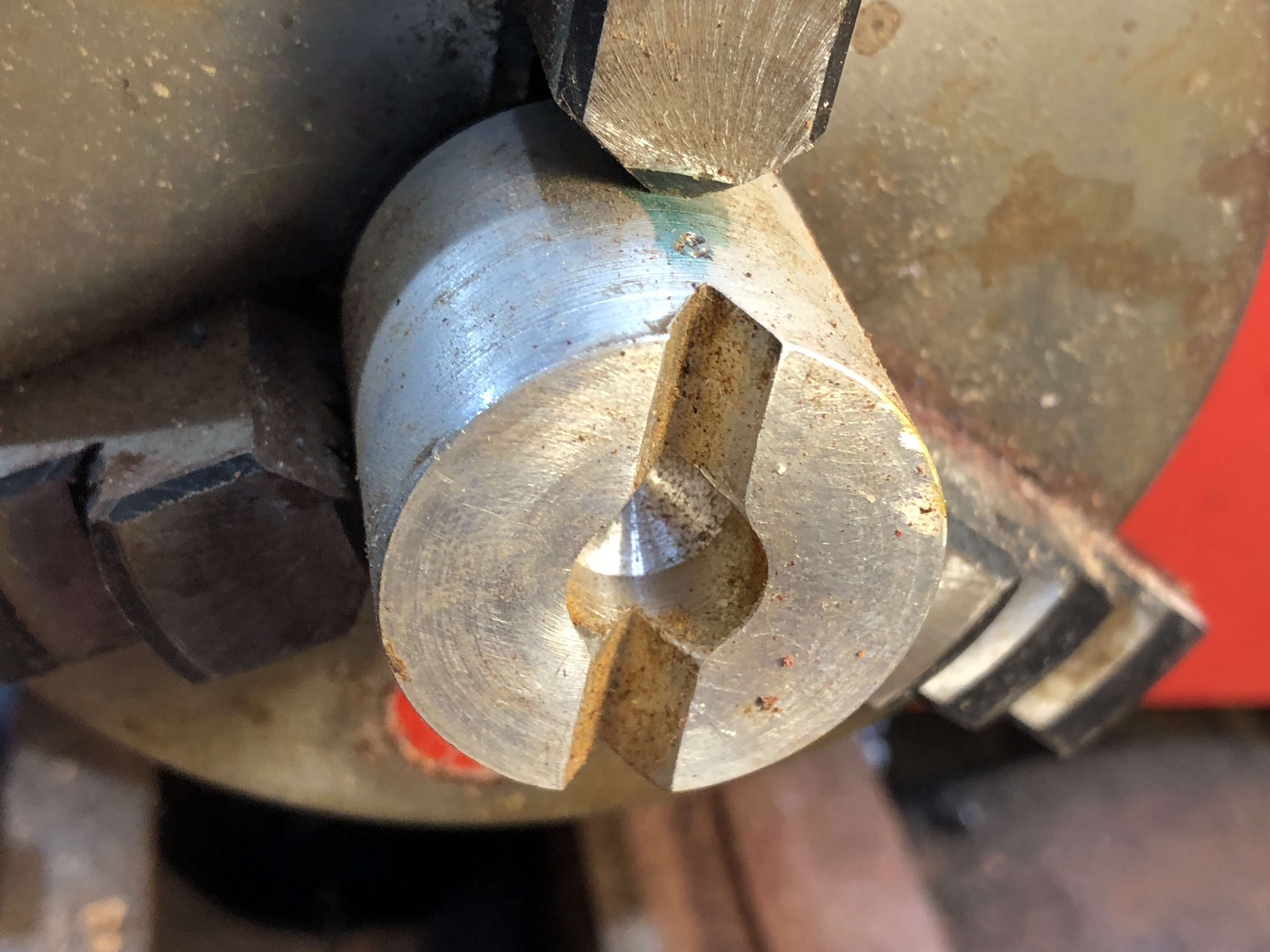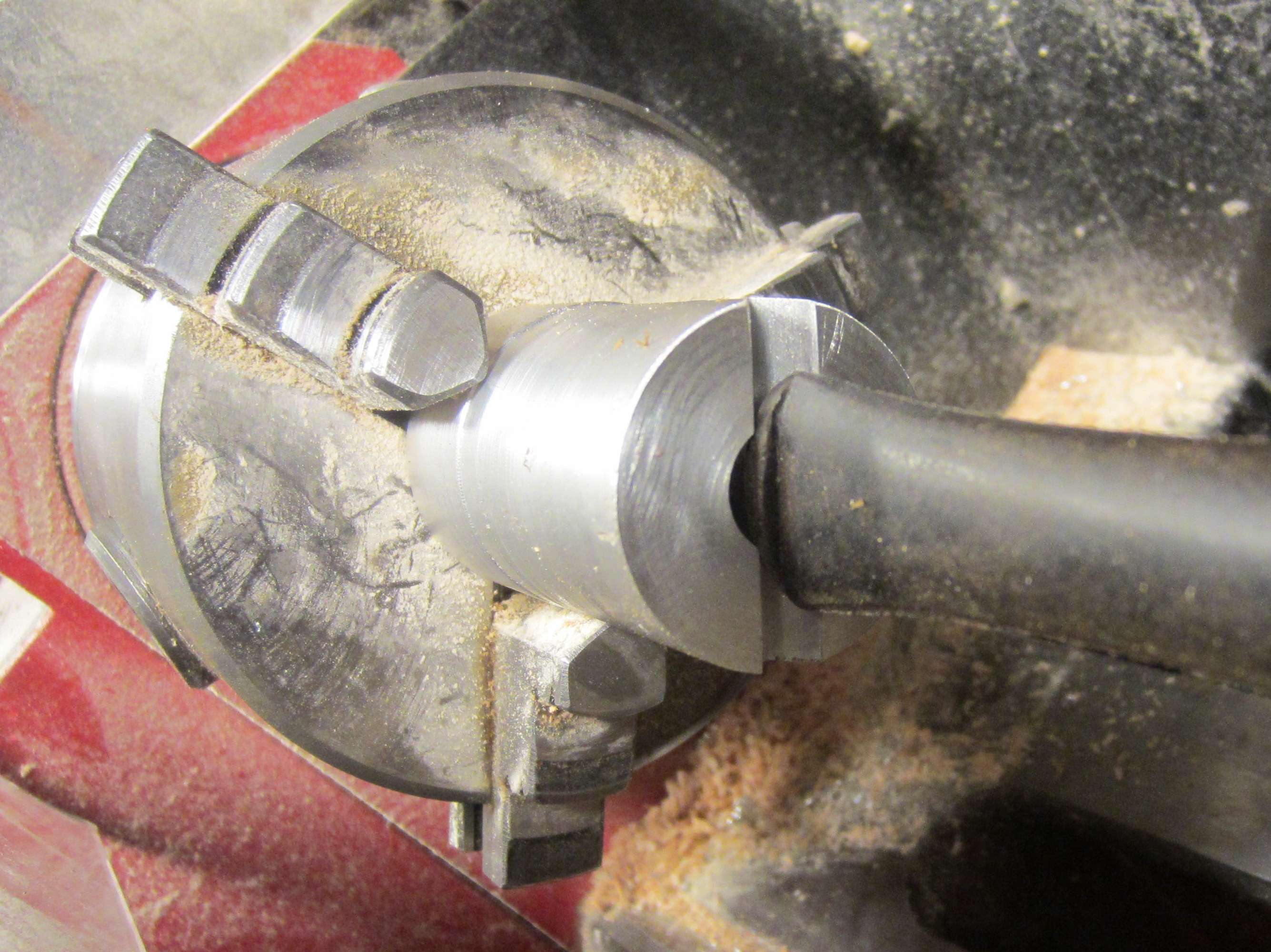First up just a general left hand side on shot.

Next looking down the pipe from if you were smoking it.

Chamber shot

Rim and general downward looking shape shot

Here is where things get ugly.


















I am using pre-formed vulcanite stems and I cut off the tenon piece on the pre-formed because I want to use a piece of delrin for the tenon. I then chuck the stem in a set of pen jaws on my Nova chuck. Next I face the stem with a Forstner bit and a four flute endmill. I check it to see that I've removed all the 'round' and touch it up with some 320grit sandpaper. If the face is satisfactory to my eye I then drill my airhole. After I have done that I drill the mortise. I then check it once again to make sure it is faced and tweak it with the endmill and sandpaper. I use delrin to make the tenon. I face the piece of delrin using a 3/8" endmill. I then use a starter bit to start the airway hole through the delrin. Next is a 5/32" bit to drill through the delrin. I then re-face the delrin with the endmill. I flip the piece of delrin in my chuck to face the other end of the delrin tenon. Once I'm satisfied with that I scuff up the end of the delrin I want glued in the stem and scuff up the inside of the mortise hole as well. Then I glue it in place using 5 minute epoxy. I let that set for a few hours before proceeding. Once that is complete and I have chucked up the piece of briar I then face the shank using the procedure above. I drill my airhole first and then drill the mortise hole in the stummel. The crazy part is that I then fit the stem to the stummel and check to see that it is totally flush and axial and most times it is fine. It's not until I start sanding after staining that it seems to go south on me. Maybe it's just my eyes, I don't know. I don't unchuck until I have turned the shank and made sure by visual inspection that the shank/stem is nice and flush.Sasquatch wrote:How are you tooling the stem to get the tenon sized in the first place? Ideally this is when you cut the shoulder as well (it being perfectly axial to the tenon at that point).
I will check that out. Never thought of that particular fit being a potential issue.sandahlpipe wrote:I would use the scraper instead of an end mill or forstner bit to face the shank and stem. It will get a cleaner cut since it's not removing as much material at once. Always check the fit before moving to the next step. If your tenon touches at the bottom of the mortise and the wood moves, you can get a gap. Make your tenon just a hair shorter than the mortise to account for changes in moisture.
That may solve the problem of the gap. The first thing I would do is take off a millimeter or so from the tenon.shikano53 wrote:I will check that out. Never thought of that particular fit being a potential issue.sandahlpipe wrote:I would use the scraper instead of an end mill or forstner bit to face the shank and stem. It will get a cleaner cut since it's not removing as much material at once. Always check the fit before moving to the next step. If your tenon touches at the bottom of the mortise and the wood moves, you can get a gap. Make your tenon just a hair shorter than the mortise to account for changes in moisture.
Thanks everyone for all the great advice and comments.
I did worry away at it yesterday afternoon and found that I couldn't get in close enough with the scraper. I did manage to fix it a bit better using the 'Kentucky windage method' AKA my eyes and 320 grit paper.
Now I have a better understanding of the use of pin gauges. Another one for the shop drawer.
Sometimes the simplest way to do things is the best way, huh? The scraper method of squaring the was scaring the heck out of me, I was avoiding it relentlessly. I've been banging my head on this for the past few days. The forstner bit just is not cutting itsandahlpipe wrote: ↑Tue Aug 08, 2017 8:29 am I would use the scraper instead of an end mill or forstner bit to face the shank and stem. It will get a cleaner cut since it's not removing as much material at once. Always check the fit before moving to the next step. If your tenon touches at the bottom of the mortise and the wood moves, you can get a gap. Make your tenon just a hair shorter than the mortise to account for changes in moisture.
Hi Doc, wondering if you can share a picture of the device you use? The link is now deadDocAitch wrote:I use this device for pre molded stems for turning the tenon and facing the shoulder:
https://pipesmokersforum.com/community/ ... st-1530179
The tenon is held in a live center. You can do this with your Delrin tenon, but the axes may not be exactly concentric.
Additionally, for tweaking the shank face, I use a cylinder of aluminum or hardwood with a piece of Delrin as a pilot and glue a piece of sand paper to the face of the cylinder. Push the pilot into your mortise, and sand the face of the shank until you get a flush fit. You can use paper ranging from rough to fine (100 up to 400 or so).
PM me if you want photos.
DocAitch
Also it is not clear to me how your stem shoulder is so rough with the method that you are using.

